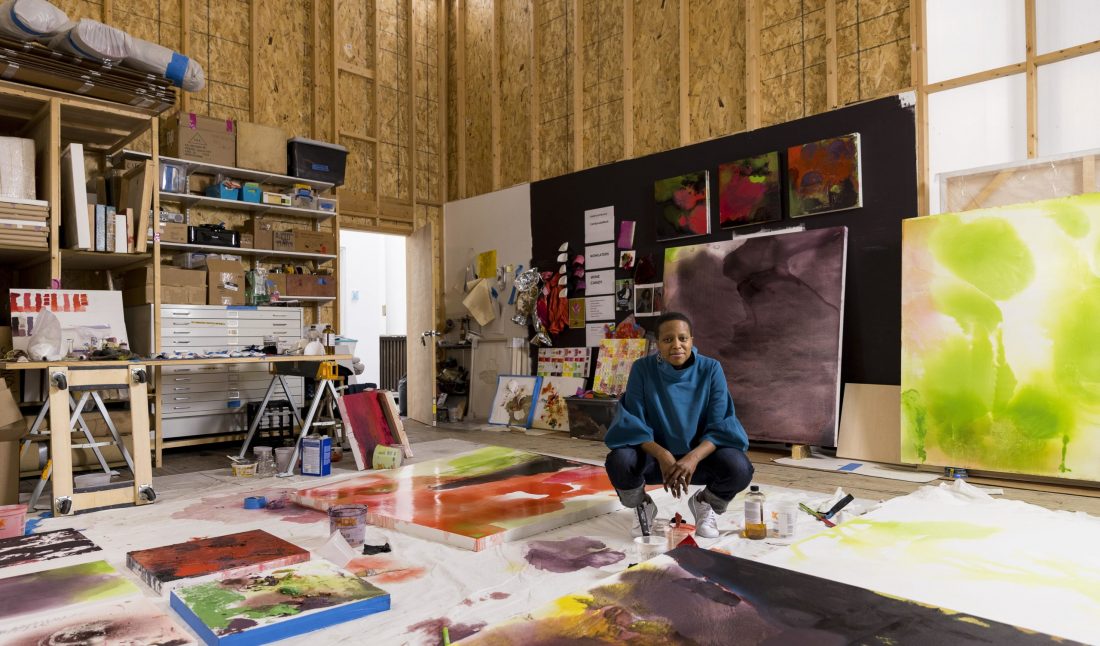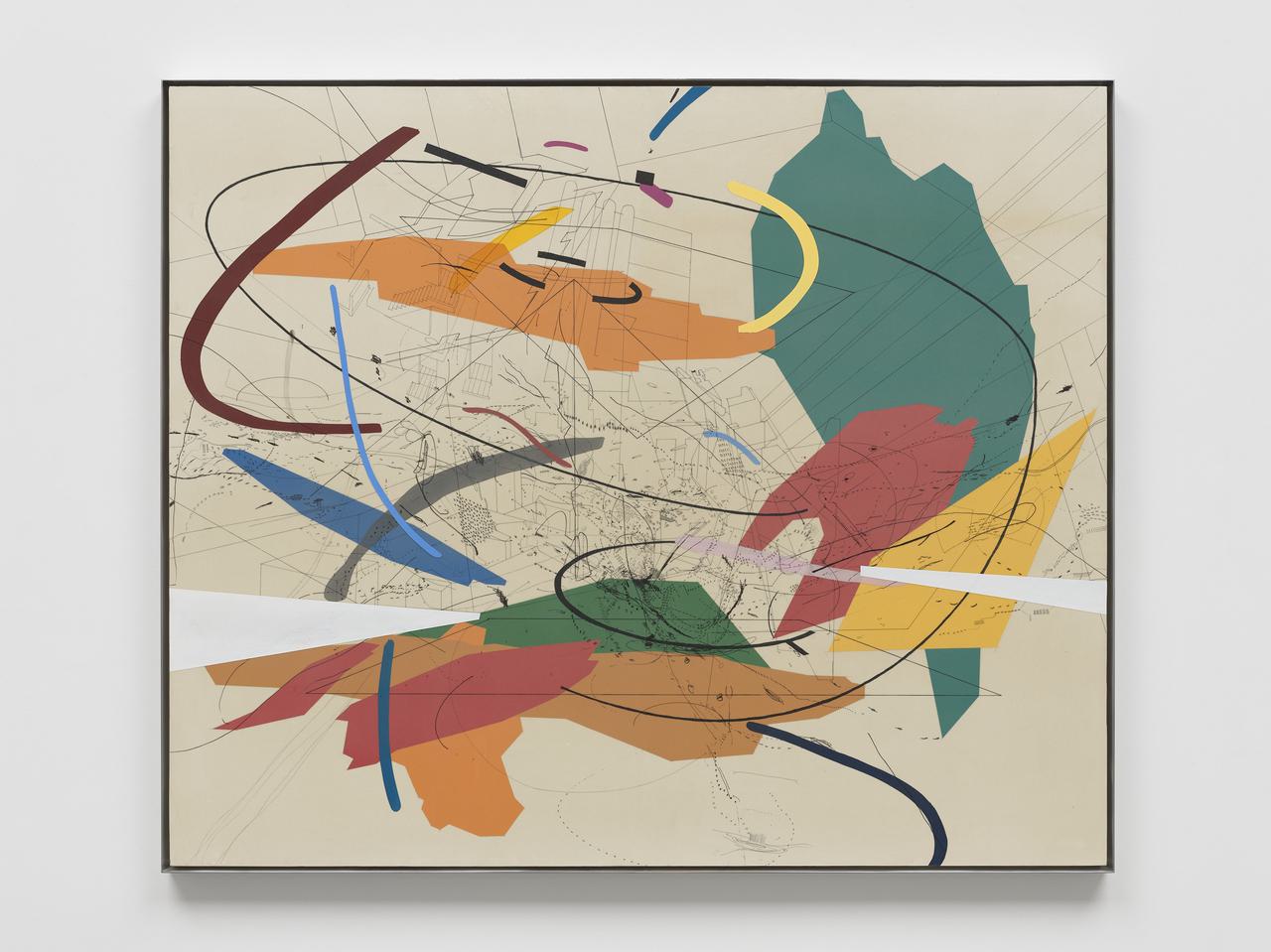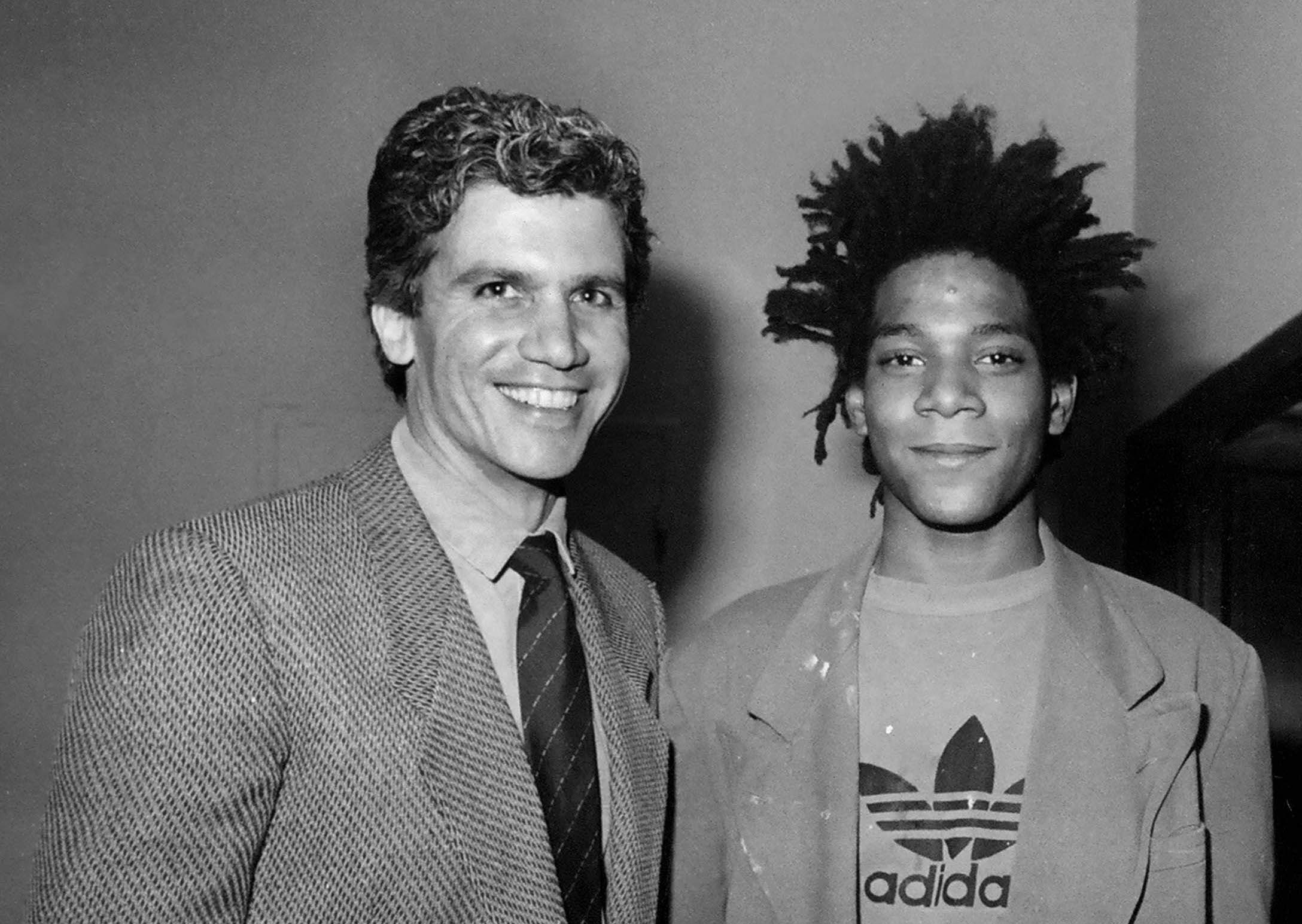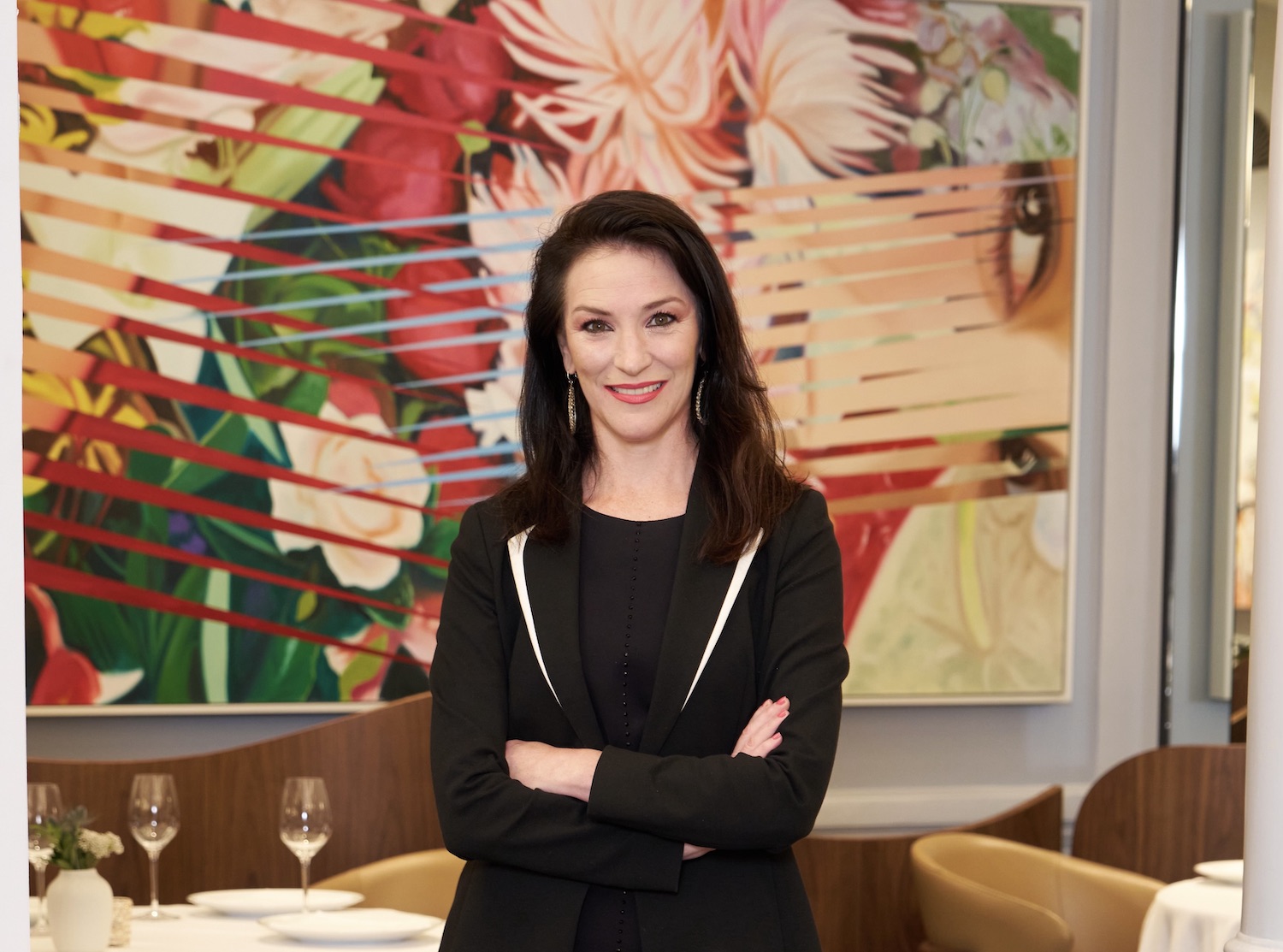In 2014, Amanda Williams painted condemned houses in Chicago’s Englewood neighborhood from top-to-bottom in monochrome hues, representative of branding and emblems prominent in Black culture—a project she called “Color(ed) Theory.” Made after examining a city zoning map, Williams found that neighborhoods home to a primarily Black demographic had been marked in red, deeming their inhabitants ineligible for federal housing loans. Concurrent to her fascination with color theory, the artist took it upon herself to use this knowledge in order to reclaim for the people spaces decalred unworthy, employing her own personal theory of color to find a common ground.
In the time since, Williams’s practice has unfolded across several mediums with color theory at its core, using this artistic facet as a means of connecting with her audience. In 2021, her work was featured in the show “Social Works II” curated by Antwaun Sargent at Gagosian’s London location. That piece, What black is this you say?—Although rarely recognized as such, ‘The Candy Lady’ and her ‘Candy Store’ provided one of your earliest examples of black enterprise, cooperative economics, black women CEOs and good customer service”—black (07.24.20) from the series “What Black Is This, You Say?,” which originated as abstracted images accompanied by captions posing thoughtful racial commentary. The series evolved into paintings laden with color, in which childhood memories and elements of Black culture informed Williams’s palette.
Williams’s solo show “CANDYLADYBLACK” is now on view at Gagosian’s Park and 75th Street New York space through July 8. Also organized by Sargent, the show of vibrant abstract paintings evoke sweet imagery of summer stoops and sticky fingers after a trip to the neighborhood candy lady, with their sugary hues reminiscent of melted Jolly Ranchers or Now and Laters. Curious about the artist’s own memories and the greater narrative that lies beneath, Whitewall caught up with Williams to learn more.
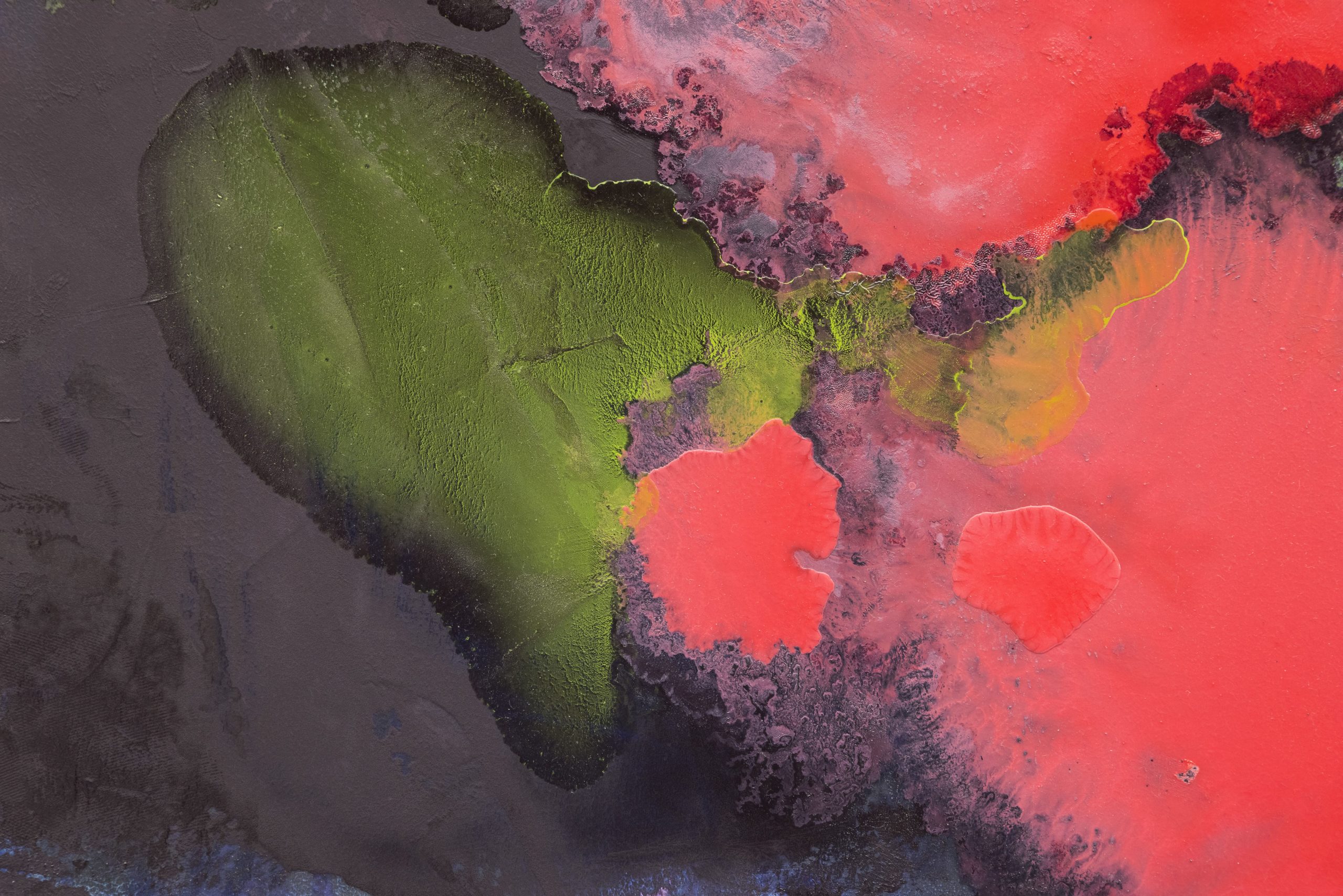 Amanda Williams, “CandyLadyBlack (The Champagne is Burned),” detail, 2022, Oil, mixed media on wood panel
20 x 20 inches; © Amanda Williams, photo by Jacob Hand, courtesy of the artist and Gagosian.
Amanda Williams, “CandyLadyBlack (The Champagne is Burned),” detail, 2022, Oil, mixed media on wood panel
20 x 20 inches; © Amanda Williams, photo by Jacob Hand, courtesy of the artist and Gagosian.
WHITEWALL: Following your feature in the exhibition “Social Works II,” what then led you to the making of “CANDYLADYBLACK”? Can you walk us through the show’s inception and creative process?
AMANDA WILLIAMS: For “Social Works II,” I presented several works from an ongoing series “What Black Is This You Say?” which began June 2020, as almost daily missives on Instagram, that were a challenge to ubiquitous and surface calls for a blanket solidarity with black lives. Those 100+ posts gave a full range of ways black lives show up in the world. I purposely wrote them with wordplay that altered between first and third person, past and present tense, which allowed readers to insert or distance themselves from painful as well as satirical kernels of their own identities.
Each IG post featured a caption and a photographic abstraction of something I’d shot in my immediate environment (you must recall we were all on heavy lockdown in this moment). Those quick images/captions evolved into watercolor and painting studies.
My own mother was a high-level executive at a Fortune 500 company, so this isn’t a rags-to-riches story about me not having role models or not having an awareness of black people’s limited presence in 1980s corporate America. But I am interested in demystifying an either/or with black socio-economic experiences. It’s a blur of the social spectrum. As with a lot of my projects, I am parsing out questions of who and what receives societal value; and what colors we associate with such valuation.
What kinds of experiences and people shape our sensibilities and sense of self? The boutique-like nature of the Park & 75th gallery space and its location on the upper east side seemed like the perfect place to meditate on an almost social and geographic polarity. I had a lot of ideas that touched on ideas about the domestic vs. commercial contrast, but ultimately wanted to focus on the strong colors associated with this bygone era of black Chicago and its beloved heroine. [See original post here.]
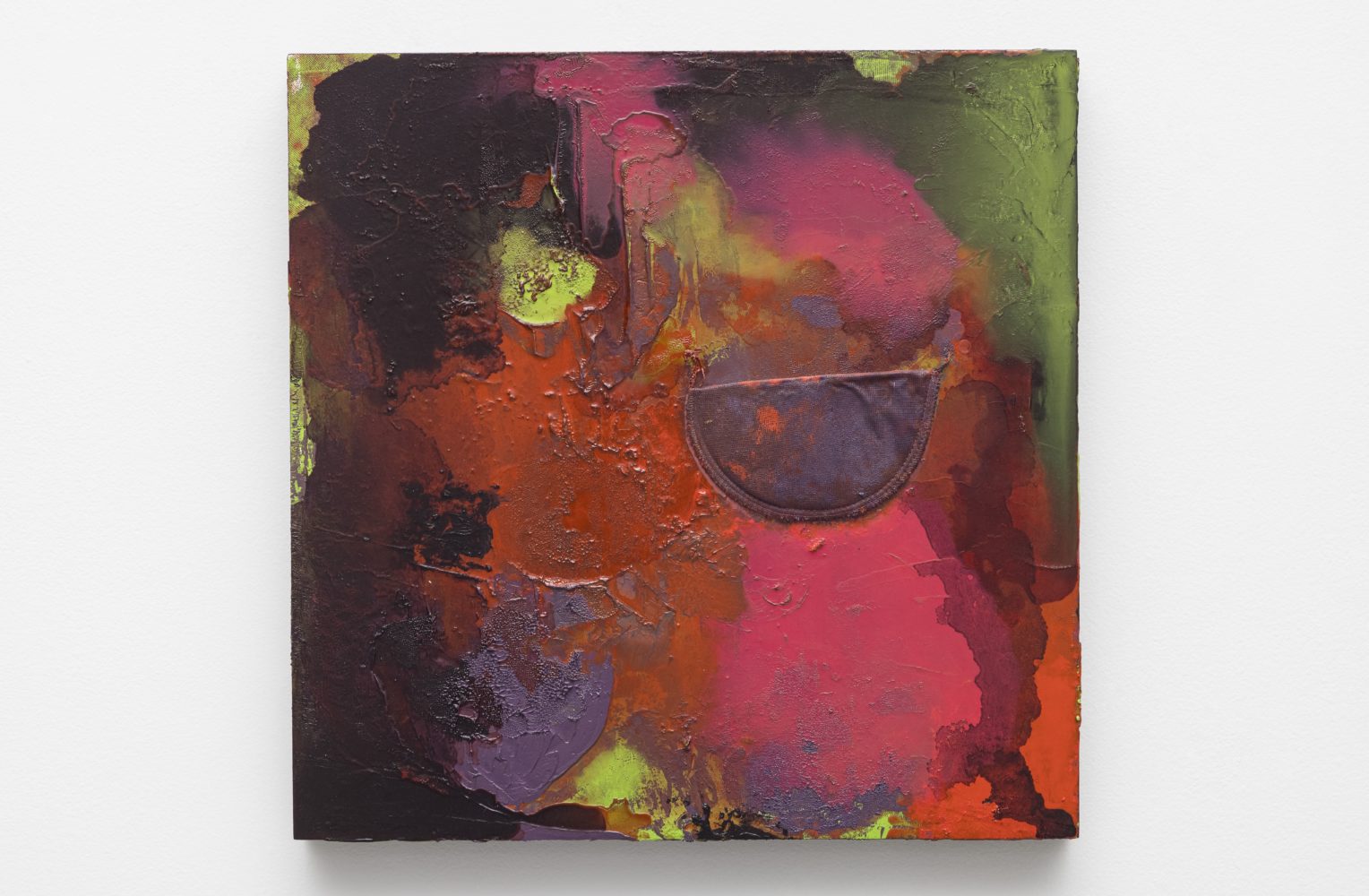 Amanda Williams, “CandyLadyBlack (Just when I think I know you…),” 2022, Oil, foam shoulder pad, mixed media on wood panel,
20 x 20 inches; © Amanda Williams, photo by Jacob Hand, courtesy of the artist and Gagosian.
Amanda Williams, “CandyLadyBlack (Just when I think I know you…),” 2022, Oil, foam shoulder pad, mixed media on wood panel,
20 x 20 inches; © Amanda Williams, photo by Jacob Hand, courtesy of the artist and Gagosian.
WW: Your use of color is typically associated with other memories and experiences. Can you tell us about your personal experiences with the neighborhood “candy lady” and how those stories are intertwined within these works?
AW: I like that color can be both mnemonic and a signifier. Our “candy lady” was so powerful to me because I thought that only she had those kinds of candy flavors. They were in fact off-brand candies bought wholesale.
Our/my candy lady lived a few blocks away and we weren’t always allowed to travel to her unless supervised by an older kid. So, we’d often send one emissary armed with several coins and candy orders and then upon her return we’d sit on the hot summer sidewalk enjoying what we got. My order was always for Jolly Ranchers, which we called “wine candy” for I’m not sure what reason, and Now and Laters, which we adopted the pronunciation, Nowlaters, no “and” needed!
Because this was a phenomenon that pre-dated ready access to information like social media or texting, I in fact thought that only our neighborhood had a candy lady. I wasn’t until much later that I realized this to be a phenomenon for most of black Chicago in the 70s and 80s. I like that each friend I’ve called to query regardingtheircandy lady had immediate, happy, detailed, visceral memories of their experience.
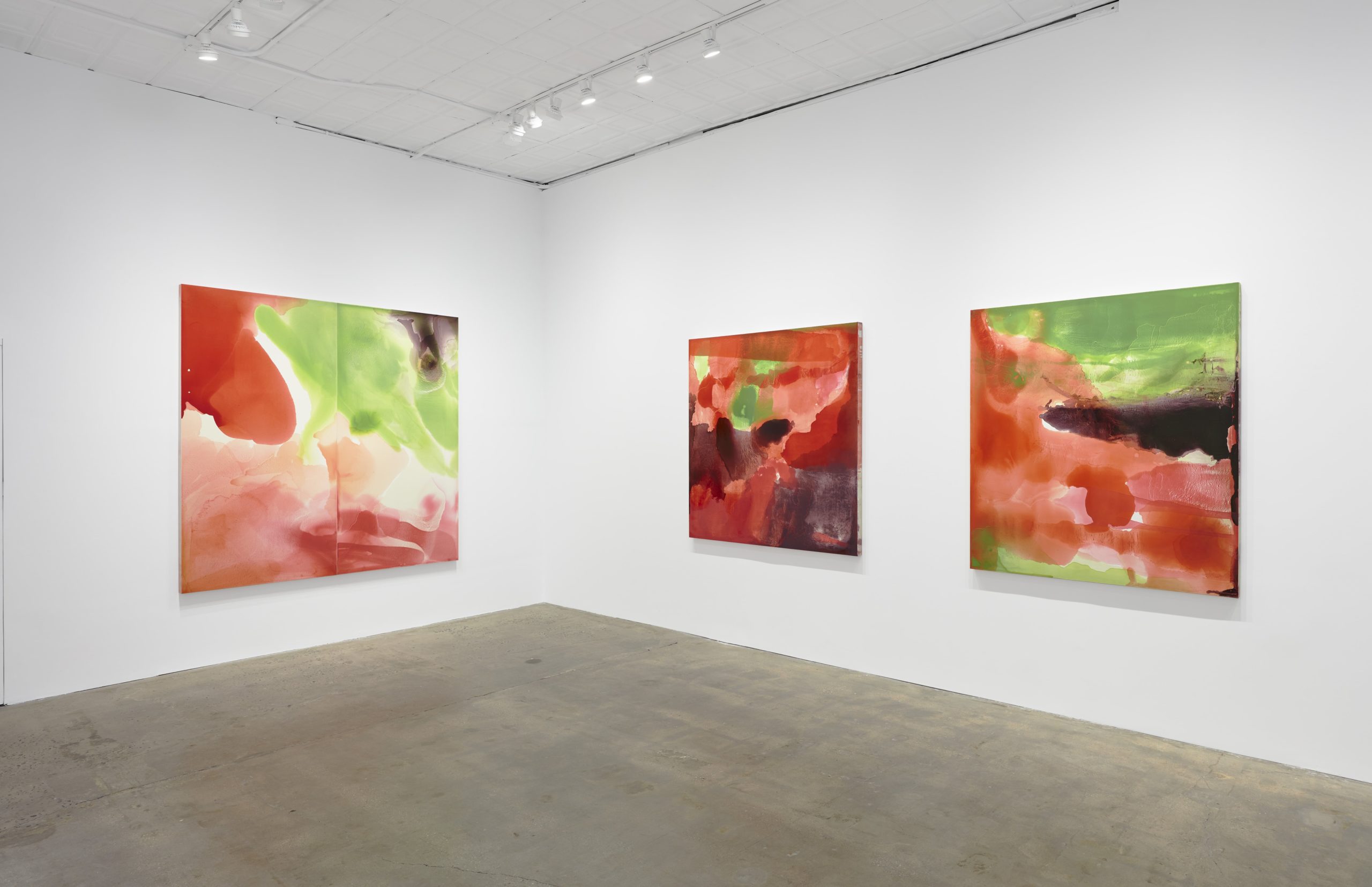 Amanda Williams, “CANDYLADYBLACK,” installation view, 2022
Artworks © Amanda Williams, photo by Tom Powel Imaging, courtesy of Gagosian.
Amanda Williams, “CANDYLADYBLACK,” installation view, 2022
Artworks © Amanda Williams, photo by Tom Powel Imaging, courtesy of Gagosian.
WW: At face value, it’s easy to enjoy the works and their vibrant colors, but we know there’s more to them than meets the eye. After that initial first look, what kind of conversations or mental discourse are you hoping to awaken within your viewers?
AW: There are many elements about this particular candy as a source material that are uniquely a Chicago phenomenon, but there is also something so universal about unadulterated black joy. Even if you don’t have a direct association with this kind of community figure, you can relate to the elation associated with the happiness of this colorful saturation. But there is also a power and intensity in the deep saturations and contrasts that points to a kind of strength and self-assuredness that I also associate with black women bosses.
The textures and surface finishes (glossy, gooey, matte) make you want to touch the work or linger to understand what is at play; curiosity is the signifier. There is a layered richness to these works when viewed at very close proximity. So much of the discourse around blackness gets flattened. I find that this way of working helps me grapple with the complexity and contradiction of black American life through formal and material forays of seemingly something as simple as enjoying candy.
Why does a Candy Lady need to exist? Her very presence in the neighborhoods is part of a network of informal economies and the alternative economic systems that segregation and racism necessitate. The candy lady cements a joyous shared legacy for those that grew up during that time, but as a figure, a type of labor force that provides evidence of those systemic efforts at disenfranchisement.
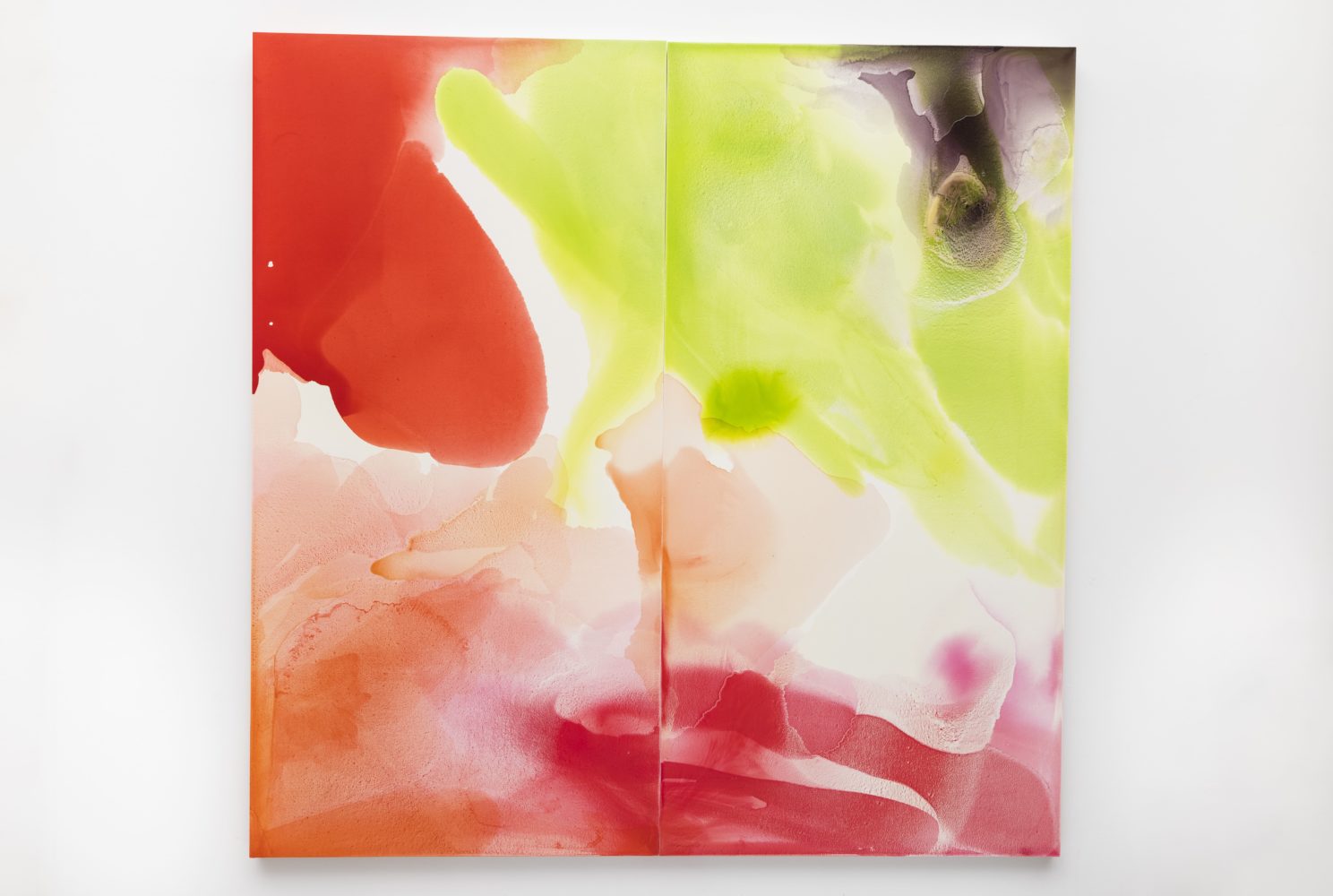 Amanda Williams, “CandyLadyBlack (Can You Feel It Too Just Like I Do),” 2022, Oil, mixed media on wood panel
80 x 80 inches (2 panels, each 40 x 80 in); © Amanda Williams, photo by Jacob Hand, courtesy of the artist and Gagosian.
Amanda Williams, “CandyLadyBlack (Can You Feel It Too Just Like I Do),” 2022, Oil, mixed media on wood panel
80 x 80 inches (2 panels, each 40 x 80 in); © Amanda Williams, photo by Jacob Hand, courtesy of the artist and Gagosian.
WW: In your 2018 TED Talk, when discussing “Color(ed) Theory,” you mentioned success coming in the form of strangers taking ownership of the project. What might that ownership look like on a smaller scale, pertaining to “CANDYLADYBLACK”? Is that something that’s important to you—allowing ownership of your work to extend to your viewers?
AW: Yes, ownership in the form of access. It’s often hard for people to engage with abstraction. They don’t see themselves in it or are suspicious of the logic and rationale presented. But everyone loves candy. Everyone can relate to things we can agree we universally understand.
The challenge I enjoy is to not make imitations of a thing, but simultaneously to use just enough of the elemental nature of a thing to draw people in. I didn’t want to make paintings that looked like candy, but there is enough there that the associations are created. They are breadcrumbs. Shared ownership is important to me. How else do we better connect?
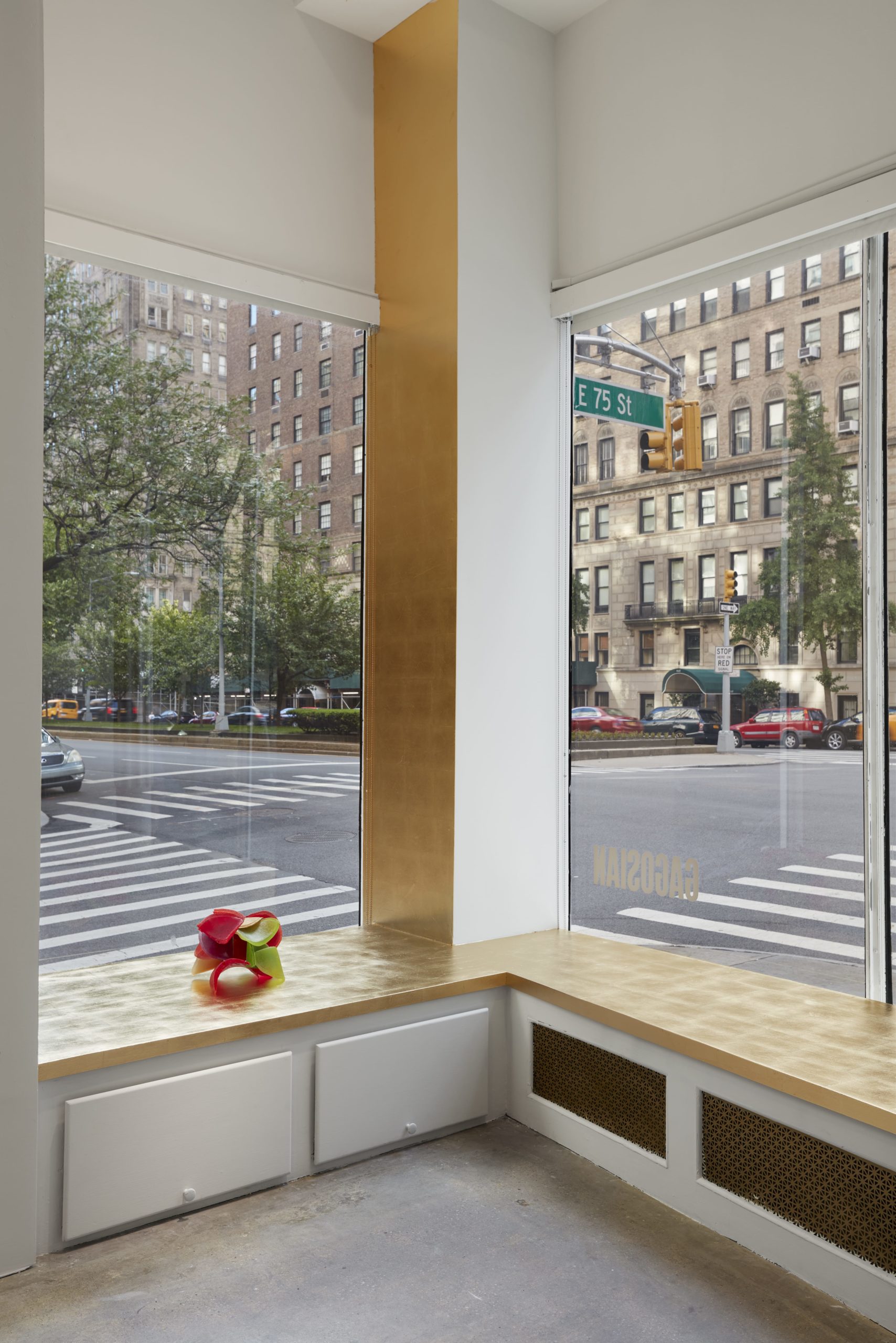 Amanda Williams, “CANDYLADYBLACK,” installation view, 2022
Artworks © Amanda Williams, photo by Tom Powel Imaging, courtesy of Gagosian.
Amanda Williams, “CANDYLADYBLACK,” installation view, 2022
Artworks © Amanda Williams, photo by Tom Powel Imaging, courtesy of Gagosian.






